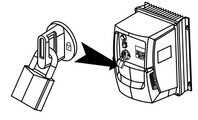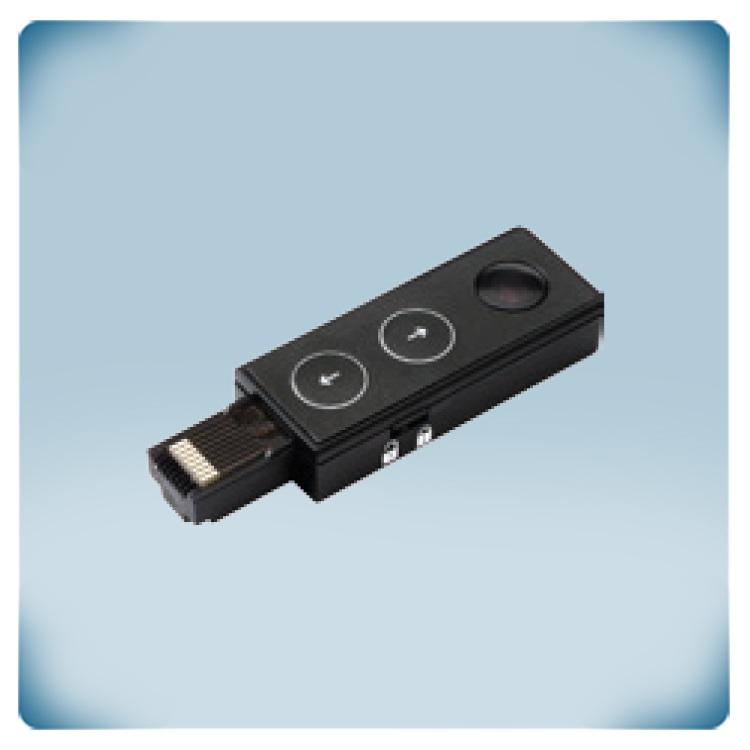EU declaration conformity
Frequency inverter | integrated controls | 2.3 A | 0.37 kW | IP66
Product description
Variable frequency drive with built-in potentiometer, run-stop switch and mains disconnector. It controls fans or centrifugal pumps with three-phase 230 Volt motors in HVAC applications. The frequency drive requires a supply voltage of single-phase 230 Volt while it controls three-phase 230 Volt motors.
The maximum (combined) motor current is 2.3 A. This drive controls multiple types of three-phase 230 Volt motors, e.g.: IE3, IE4, permanent magnet, brushless DC or synchronous reluctance motors.
This drive can be fully controlled via the built-in buttons on the front panel. Simply wire up the drive, turn the inbuilt potentiometer and the motor will start running.
The enclosure is dust-tight and washdown ready. It offers an IP66 protection against ingress of dirt and water. The heatsink is corrosion resistant. The integrated EMC filter is Class C1.
Manufacturers code: ODE-3-120023-1F1B
Documents
Additional specifications and description
User-friendly variable speed control
Frequency inverters control both motor frequency and motor voltage. This offers optimal motor control and more energy-efficient motor operation. On the other hand, they are more expensive compared to simple fan speed controllers and there is the need to set some necessary parameters before commissioning. The fact that motor voltage and motor frequency can be controlled provides additional control options and thus additional parameters. These additional parameter can be adjusted via the push buttons on the front panel.
Integrated controls

This frequency inverters has an inbuilt potentiometer to select the optimal motor speed. The motor can be disabled or enabled (forward or reverse) via the 3-position switch. A standard motor can be controlled almost immediately via these two controls. There is also a built-in mains switch. During maintenance, the power supply can be disconnected via the mains disconnector switch with padlockable OFF position. Via an optional padlock a safe situation can be created to guarantee safe working circumstances.
IP66 enclosure for wall-mounting in harsh environments
The wall-mounting enclosure is designed to protect the electronics in harsh environments as well as in outdoor applications. It offers an IP66 protection against the ingress of water, dirt and contaminants. This makes it possible to install this frequency inverter directly on the installation, even in wash-down applications. The heatsink is corrosion resistant. All this eliminates the need of an electric cabinet. It is advisable to protect the device against snow and direct sunlight.
Pulse-width modulation
Frequency inverters control motor voltage and motor frequency via a technology called pulse-width modulation. This technology converts the supplied AC voltage into DC voltage. A frequency inverter has a DC bus, which can be seen as a buffer tank for the available energy. This buffer tank is filled both by the supply voltage (via the rectifier) and by regenerative energy from the motor that flows back during braking. This DC voltage is converted back into a kind of alternating voltage by IGBTs. IGBTs or Insulated Gate Bipolar Transistors are bipolar transistors with an insulated gate terminal that can switch high electrical current at high speed. Thanks to the smart control of the IGBTs, both the motor voltage and the motor frequency can be controlled. This enables optimum motor control and energy-efficient operation. This frequency inverter requires a single-phase 230 V power supply. It controls standard 3-phase 230 Volt IE2, IE3 and IE4 induction motors. On top of that, it can also control Permanent Magnet motors, Brushless DC Motors and Synchronous Reluctance Motors.
Standard built-in EMC filter class C1
A disadvantage of high-frequency switching IGBTs is the fact that they pollute the electrical network with higher harmonic interference signals - this is called EMC pollution. To minimize this network pollution, an EMC filter class C1 is built in as standard. This blocks the pollution and reduces interferences with other electronic devices installed in the surrounding area. However, the EMC filter only is not sufficient to eliminate all interferences. In addition to the EMC filter, correct installation and wiring are required to minimize interferences. Power cables should always be separated from signal and network cables.




Remarks, reviews & ratings